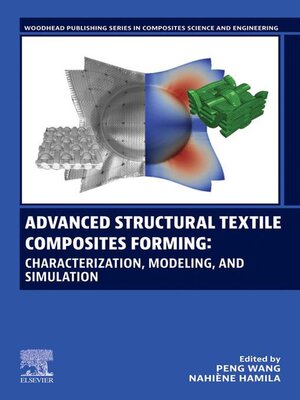Advanced Structural Textile Composites Forming
ebook ∣ Characterization, Modeling, and Simulation · Woodhead Publishing Series in Composites Science and Engineering
By Peng Wang

Sign up to save your library
With an OverDrive account, you can save your favorite libraries for at-a-glance information about availability. Find out more about OverDrive accounts.
Find this title in Libby, the library reading app by OverDrive.



Search for a digital library with this title
Title found at these libraries:
| Library Name | Distance |
|---|---|
| Loading... |
Advanced Structural Textile Composites Forming: Characterization, Modeling, and Simulation comprehensively describes the influence of fiber/fabric architectures and properties on composites forming, along with their deformability and structural optimization, covering the latest advances in the composites forming field. Part one reviews textile reinforcement architectures and discusses the forming behaviors of important 2D and 3D fabrics. Part two discusses numerical models to conduct simulation analysis of different structural composites forming at mesoscopic and macroscopic scales, in particular, 3D preforms with through-the-thickness yarns.Part three looks at the latest developments in the relationship between forming and other steps in composite manufacturing, such as resin injection, and automated fiber placement (AFP) and the effects on certain mechanical properties, such as structural damage and impact resistance. The book will be an essential reference for academic researchers, industrial engineers and materials scientists working with the manufacture and design of fiber-reinforced composite materials. - Describes the influence of the fiber/fabric architectures and properties on composites forming, along with their deformability and structural optimization
- Provides numerical modeling and simulation of different fiber-reinforced composites forming at mesoscopic and macroscopic scales, in particular, reinforcements with discontinue fibers, and 3D preforms with through-the-thickness yarns
- Discusses cutting edge topics such as resin injection, and automated fiber placement (AFP) and the effects of forming results on mechanical properties such as structural damage and impact resistances







